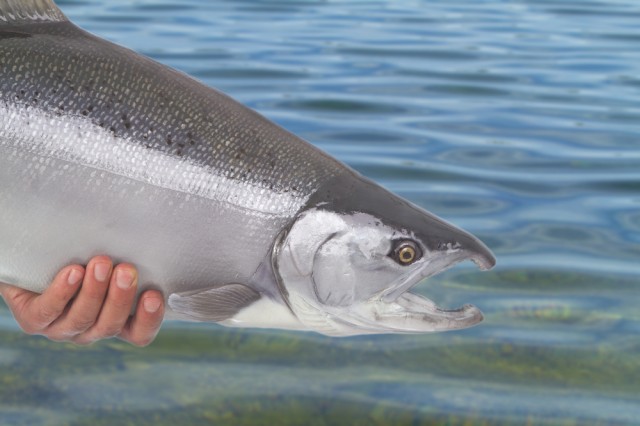Chinook / King Salmon
Status
Along the Pacific Coast, Chinook salmon range from Alaska south to southern California. Due to a variety of habitats and life history patterns, at least 17 distinct runs of Chinook salmon have been identified within California. Locally, this species occurs in the San Joaquin and Sacramento rivers and tributaries located downstream of impassable barriers. The Central Valley Fall and Late Fall-run of Chinook salmon is considered sensitive by the National Marine Fisheries Service and is designated as a “California Species of Special Concern” by the California Department of Fish and Game. Other runs in California, including the Spring-run Chinook Salmon, Winter-run Chinook Salmon and California Coastal Chinook Salmon, are formally listed under the Federal Endangered Species Act and California Endangered Species Act. Salmonid species along the west coast, including Chinook salmon, continue to experience dramatic declines as a result of habitat loss and degradation.
Description
Chinook salmon are the largest of all salmon species and adults often exceed 40 pounds. Like all other salmon, Chinook salmon has a small, fleshy “adipose” fin located between the dorsal and tail fin. When in the ocean this species has a blue-green back with silver sides, and small black spots on both lobes of the tail. Once fish enter freshwater and begin to spawn, the color changes to an olive brown to dark maroon color overall, without conspicuous streaking or blotches on side. Spawning males are darker than females and have a hooked jaw and slightly humped back. Chinook salmon can be distinguished from other spawning salmon by the dark, solid black gums of the lower jaw. Juvenile salmon have 6 to 12 parr (vertical bars) on their sides. The adipose fin of juveniles is pigmented on the upper edge but clear at the base.
Habitat Requirements
Chinook salmon are anadromous, in that they spend most of their lives in the ocean and return to their natal freshwater streams. Adults migrate from the Pacific Ocean to freshwater streams or rivers to spawn, and die shortly thereafter. Eggs are deposited in a redd (nest) in a location with suitable gravel composition, water depth and velocity. After laying eggs, adults will guard redds for four to 25 days before dying. Depending on water temperature, eggs hatch after 40 to 60 days, and remain in the gravel for an additional four to six weeks. The young fish emerge as fry when flows and conditions are suitable for optimum survival and growth. Young will typically seek out lower velocity sections of streams, located along stream margins and in backwater areas. In the Central Valley of California, juvenile Fall-run Chinook rear from three to six months in freshwater before migrating to the ocean. Once in the marine environment, Chinook salmon will spend one to four seasons at sea before returning to their natal stream to spawn. Young Chinook feed primarily on terrestrial and aquatic insects, amphipods, and small crustaceans, while adults feed primarily on other fish.
Local Occurrence
The Fremont Landing Preserve on the Sacramento River was designed to conserve salmon habitat.

 (916) 434-2759
(916) 434-2759



